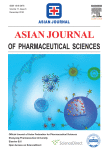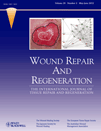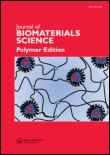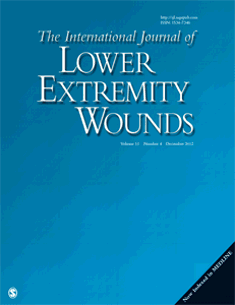
Wound Practice and Research
Scope & Guideline
Innovating insights for effective wound healing.
Introduction
Aims and Scopes
- Evidence-Based Wound Healing Strategies:
The journal emphasizes systematic reviews and evidence summaries that provide insights into effective treatment modalities for different types of wounds, including chronic and acute wounds. - Innovative Therapeutic Approaches:
Research on novel therapies, such as electrical stimulation, topical agents, and alternative treatments, is a core area of focus, highlighting advancements in wound care technology. - Multidisciplinary Perspectives:
The journal covers a range of disciplines, including nursing, occupational therapy, and nutrition, reflecting a comprehensive approach to wound management. - Patient-Centric Care:
Emphasizing the importance of patient education, satisfaction, and quality of life, the journal addresses how wound care practices can be tailored to meet individual patient needs. - Healthcare Policy and Practice:
The journal discusses the implications of wound care practices on healthcare systems, including cost-effectiveness and policy recommendations for improving wound management.
Trending and Emerging
- Digital Health Interventions:
There is a noticeable increase in research on eHealth applications and telemedicine for wound management, highlighting the growing importance of technology in patient care. - Comorbidities and Their Impact:
Studies examining the influence of comorbid conditions, such as diabetes and obesity, on wound healing are becoming more prominent, underscoring the need for comprehensive patient assessments. - Patient Education and Self-Management:
Emerging themes focus on empowering patients through education and self-management strategies to enhance wound care outcomes, reflecting a shift towards participatory healthcare. - Cost-Effectiveness and Economic Evaluations:
There is a rising trend in analyzing the economic impact of wound care interventions, emphasizing the importance of value-based healthcare in wound management. - Interdisciplinary Collaborations:
The journal is increasingly publishing studies that involve collaborations across various healthcare professions, indicating a trend towards integrated care approaches for wound healing.
Declining or Waning
- Traditional Topical Treatments:
Research on conventional topical treatments, such as ointments and creams, appears to be declining, as newer and more innovative therapies gain attention. - Basic Wound Care Principles:
The foundational principles of wound care, which were once heavily emphasized, seem to be waning as the field shifts towards complex, evidence-based interventions. - Single-Domain Studies:
Publications that focus solely on one aspect of wound healing without considering multidisciplinary approaches are becoming less common as holistic care models gain traction.
Similar Journals

Wound Management & Prevention
Championing evidence-based practices for superior care.Wound Management & Prevention is a leading peer-reviewed journal published by HMP, dedicated to advancing the field of wound care and management. With an ISSN of 2640-5237 and an E-ISSN of 2640-5245, this open-access journal provides a platform for the dissemination of research, reviews, and clinical guidelines relevant to wound healing, prevention strategies, and best practices in clinical settings. Recognized for its significant impact within the nursing and medical communities, it ranks in the Q2 and Q3 quartiles across various categories, including Advanced and Specialized Nursing and Gastroenterology, as of 2023. The journal's commitment to high-quality content has garnered it noteworthy positions in Scopus rankings, particularly in the Nursing and Medical fields, making it a valuable resource for researchers, healthcare practitioners, and students alike. Founded in 2019 and set to continue through 2024, Wound Management & Prevention is essential for professionals striving to enhance patient care and outcomes in wound management.

Asian Journal of Pharmaceutical Sciences
Leading the way in global pharmaceutical advancements.Asian Journal of Pharmaceutical Sciences is a prestigious open-access journal published by Shenyang Pharmaceutical University, dedicated to advancing research and developments in the field of pharmaceutical sciences. Since its inception in 2009, the journal has successfully converged a wealth of knowledge and innovation, demonstrating an impressive track record with its open access model adopted in 2013, ensuring global dissemination of crucial research findings. With an outstanding impact factor and consistently ranked in the Q1 category for both Pharmaceutical Science and Pharmacology in 2023, it ranks among the top journals in its field, as evidenced by its impressive Scopus rankings—4th out of 183 in Pharmaceutical Science and 10th out of 313 in Pharmacology, showcasing its high relevance and credibility (98th and 96th percentiles respectively). Researchers, professionals, and students can access a diverse array of articles that encompass groundbreaking studies, reviews, and reports, solidifying the journal's position as a vital resource for anyone engaged in pharmaceutical research. With its commitment to quality and accessibility, Asian Journal of Pharmaceutical Sciences plays an essential role in fostering innovation and collaboration within the global scientific community.

WOUND REPAIR AND REGENERATION
Fostering Collaboration in Wound Care ScienceWound Repair and Regeneration is a premier peer-reviewed journal published by Wiley, dedicated to advancing the science of wound healing and tissue regeneration. With an impressive impact factor that places it in the Q1 category for both Dermatology and Surgery, this journal has established itself as a vital resource for researchers and clinicians alike, ranked #50 out of 551 in Medicine Surgery and #18 out of 142 in Medicine Dermatology according to Scopus metrics. Since its inception in 1993, Wound Repair and Regeneration has provided a platform for groundbreaking research, innovative methodologies, and critical reviews that shape the future of wound management. The journal's commitment to disseminating high-quality research makes it an essential reference for professionals in the fields of dermatology and surgical medicine, fostering collaboration and knowledge exchange. Although it does not offer open access options at this time, articles are widely accessible through various institutional subscriptions. Emphasizing the intersection of clinical practices and research, this journal remains instrumental in addressing contemporary challenges and advancing the frontiers of wound care.

JOURNAL OF BIOMATERIALS SCIENCE-POLYMER EDITION
Exploring the synergy of biomaterials and engineering.JOURNAL OF BIOMATERIALS SCIENCE-POLYMER EDITION, published by Taylor & Francis Ltd, is a distinguished scholarly journal dedicated to the exploration of biomaterials and their applications in various fields such as bioengineering, biomedical engineering, and biophysics. With an ISSN of 0920-5063 and an E-ISSN of 1568-5624, this journal offers a platform for researchers and professionals to share innovative findings and methodologies that advance the science of polymer-based biomaterials. The journal's impact within the academic community is underscored by its notable Scopus rankings, including a Q2 status in both Biomedical Engineering and Biophysics as of 2023, reflecting its significant contribution to advancing knowledge and practice in these fields. The scope of the journal spans from fundamental research to applications in medical devices and regenerative medicine, ensuring comprehensive coverage of the latest trends and breakthroughs. Although it does not currently offer open access options, the journal remains a pivotal resource for students, researchers, and professionals committed to the development and application of biomaterials in healthcare. For further details, the journal is based in Abingdon, United Kingdom, at 2-4 Park Square, Milton Park, OX14 4RN.

WOUNDS-A COMPENDIUM OF CLINICAL RESEARCH AND PRACTICE
Elevating Patient Outcomes with Evidence-Based ResearchWOUNDS - A Compendium of Clinical Research and Practice is an esteemed journal, published by H M P Communications, that serves as a vital resource for researchers, clinicians, and students dedicated to the field of wound care and management. Since its inception in 1996, the journal has established itself as a significant platform for disseminating original research and innovative clinical practices related to wound healing, making substantial contributions to the disciplines of Medical and Surgical Nursing, as well as Medicine and Surgery. With a current impact factor that categorizes it in Q2 and Q3 quartiles for various relevant fields, WOUNDS enjoys a robust academic reputation underscored by its Scopus ranking - being among the top 30% in Nursing and demonstrating a noteworthy presence in Medicine and Surgery. The journal continues to foster knowledge sharing and collaboration among professionals, enhancing patient care outcomes in clinical settings. Researchers and practitioners alike will find value in its rigorously peer-reviewed articles that not only inform clinical practice but also drive forward the science of wound management.

Chronic Wound Care Management and Research
Elevating Standards in Wound Management Practices.Chronic Wound Care Management and Research is an esteemed journal published by DOVE MEDICAL PRESS LTD, focusing on the evolving field of chronic wound care. Since its inception in 2014 as an Open Access platform, the journal has provided a vital resource for researchers, clinicians, and healthcare professionals dedicated to advancing the understanding and management of chronic wounds. With an ISSN of 2324-481X, the journal fosters the dissemination of high-quality research, reviews, and innovative practices aimed at enhancing patient outcomes. By making research freely accessible, it empowers a global audience to stay informed about the latest advancements in wound care, ultimately contributing to improved healthcare practices and policies. The journal's commitment to rigorous peer review and scholarly excellence has positioned it as a key player in the field, making it indispensable for anyone involved in wound management and research.

International Journal of Lower Extremity Wounds
Advancing wound care knowledge for lower extremities.The International Journal of Lower Extremity Wounds, published by SAGE PUBLICATIONS INC, is a leading scholarly platform dedicated to advancing the field of wound care and management focused specifically on the lower extremities. With an ISSN of 1534-7346 and E-ISSN 1552-6941, this journal has built an impressive reputation since its inception in 2002, currently spanning until 2024. Positioned in the Q3 category in Medicine and Q2 in Surgery as per the latest 2023 rankings, it holds a significant 82nd percentile in Scopus rankings, showcasing its influence in the academic community. While it does not operate as an Open Access journal, it remains an essential resource for researchers, clinicians, and students interested in innovative wound care solutions and surgical advances. By publishing high-quality, peer-reviewed research, the International Journal of Lower Extremity Wounds plays a crucial role in enhancing clinical practices, improving patient outcomes, and fostering collaboration among professionals in the medical and surgical fields.

Journal of Burn Care & Research
Transforming lives with cutting-edge burn care insights.Welcome to the Journal of Burn Care & Research, a prominent publication under the esteemed Oxford University Press. With its dedication to advancing the field of burn care, the journal serves as a vital platform for researchers, clinicians, and healthcare professionals to disseminate cutting-edge findings and innovative practices. The journal, bearing the ISSN 1559-047X and E-ISSN 1559-0488, has shown impressive performance, ranking in the Q2 category in multiple fields including Emergency Medicine, Medicine (Miscellaneous), Rehabilitation, and Surgery as of 2023, indicating its significant impact within the academic community. The Scopus rankings further highlight its value, with respectable rankings in specific categories, reinforcing its relevance and reach. The journal aims to foster innovative research and clinical excellence, encouraging Open Access to maximize knowledge sharing and collaboration across disciplines. Established in 2006 and continuing through to 2024, the Journal of Burn Care & Research is your essential resource for high-quality research and reviews that aim to improve outcomes for patients affected by burns and related conditions.

International Journal of Burns and Trauma
Advancing Knowledge in Burn and Trauma CareThe International Journal of Burns and Trauma is a leading platform dedicated to the advancement of research in the field of burn injuries and trauma management. Published by E-CENTURY PUBLISHING CORP, this journal aims to disseminate high-quality, peer-reviewed articles that cover a wide range of topics, including clinical practices, innovative treatments, and outcomes related to burns and trauma care. With the ISSN 2160-2026, the journal embraces an open access approach, ensuring that vital findings are accessible to a global audience, thereby fostering collaboration and knowledge-sharing among researchers, healthcare professionals, and students. The journal not only contributes significantly to the academic discourse but also aims to improve patient outcomes through the implementation of evidence-based practices. Join us in exploring groundbreaking research that shapes the future of trauma care by contributing to this vital field.

Progress in Biomaterials
Advancing the Future of Biomaterials ResearchProgress in Biomaterials is a premier journal published by Springer Heidelberg, dedicated to advancing the field of biomaterials through the dissemination of high-quality research articles, reviews, and case studies. The journal, with an ISSN of 2194-0509 and an E-ISSN of 2194-0517, holds an esteemed position within both the Biomaterials and Chemical Engineering fields, as evidenced by its rankings in the Q2 and Q1 quartiles, respectively. With its convergence over the years from 2013 to 2023, it has maintained a strong impact on scientific discourse, ranking #15 in Chemical Engineering and #30 in Biomaterials according to Scopus metrics. The journal is based in Heidelberg, Germany, and aims to provide an open platform for interdisciplinary collaboration amongst researchers, professionals, and students alike, fostering innovation and progress in biomaterials research. As a crucial resource for those engaged in this dynamic field, it empowers authors and readers to explore the latest trends, technologies, and applications in biomaterials development.